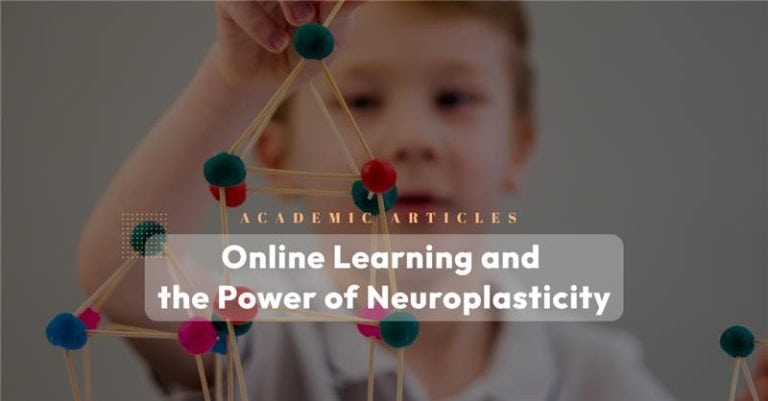When we learn, we use our brains. When we teach children, we influence how their brains develop. The rapidly growing and developing online education uses tools designed to engage students. Do these tools, demanding attention and action from the students, also push them to develop a more flexible, faster brain?
What is Neuroplasticity?
Neuroplasticity is a brain’s talent to rearrange and form new neural connections to perform tasks. A human brain’s ability to grow its flexibility is greatest during childhood and adolescence. In a nutshell, the experiences of a young brain, particularly those related to learning, shape its very structure and function.
Norman Doidge illustrated the concept in The Brain That Changes Itself. He shows how the brain can profoundly change through targeted activities. The message is clear: the educational environment can leave a lasting effect, especially in the early years.
Why Does Online Learning Work So Well for Kids?

Have you ever noticed how a child picks up a new skill or concept more readily from an online learning platform than in a traditional classroom? Online education often better taps into how children’s brains learn.
Modern online learning platforms engage kids with interactive tasks, gamification, and multimedia content. That – scientifically speaking – harnesses neuroplasticity. Research by Richard Mayer (2017) showed that multimedia tools – videos, simulations, and interactive elements – improve comprehension and memory retention more effectively than traditional teaching methods.
Computer Games, Digital Platforms and Neuroplasticity
Developing brain plasticity isn’t about learning at home vs. learning in a classroom. It’s about how the form of the learning material engages a child’s brain.
A study by Simone Kühn (2014) shows that an arcade game, Super Mario, may have led to measurable growth of brain regions linked to spatial awareness, planning, and fine motor skills. The game isn’t educational, but the study demonstrates how interactive digital environments can stimulate brain growth.
Supporting neuroplasticity with education methods, including gamification, can help children maximize online learning. As the term suggests, gamification is the use of game designs in the learning material. It aims to maximize fun and engagement and incentivize learning. Experts already base the online learning program on several key strategies.
Harnessing the Power of Neuroplasticity

When we understand the power of neuroplasticity, we can help children make the most of online learning. Here are a few science-backed strategies to support their cognitive development:
- Ensure engagement: Online lessons typically comprise smaller, digestible segments for improved and easier focus and retention.
- Spaced repetition: Revisiting learned material strengthens neural connections, improving long-term memory. Research by John Dunlosky’s team and many other studies found that spaced repetition is an effective learning technique. Essentially, it means reviewing information from previously learned material at not-to-distant intervals. It improves memory and decreases the probability of forgetting something.
- Interactive multimedia: Multiple senses, videos, quizzes, and games engage students and fuel cognitive processing, as Mayer’s multimedia learning theory suggests. These ingredients make learning more enjoyable and help develop a child’s cognitive abilities.
Neuroplasticity and Life Beyond School
The benefits of neuroplasticity go beyond academic success. Early exposure to a stimulating educational environment encourages the growth of executive functions, a set of lifelong skills vital for learning and everyday life. Those skills include attention, memory, problem-solving, and critical thinking.
Psychologist Adele Diamond points out how developed executive functions strongly indicate future academic success, career achievements, and overall well-being.
In other words, the earlier a child develops these skills, the better equipped he or she is to tackle the challenges of higher education and beyond. Neuroplasticity-focused learning opens a broad, straight path to this.
Online Learning for Lifelong Success
By leveraging neuroplasticity through online learning, we have the potential to shape our children’s cognitive development. Parents can improve their children’s educational results by setting them on a modern, engaging, self-paced, self-helping path.
Share, Discuss, or Ask
Do you have a child in an online school, or are you considering enrolling your child in one? We’d love to hear about your experiences. Let us know what has been or may be decisive in the dilemma of Traditional vs. Online.
If you have questions, please visit us at EduWW or email [email protected].



